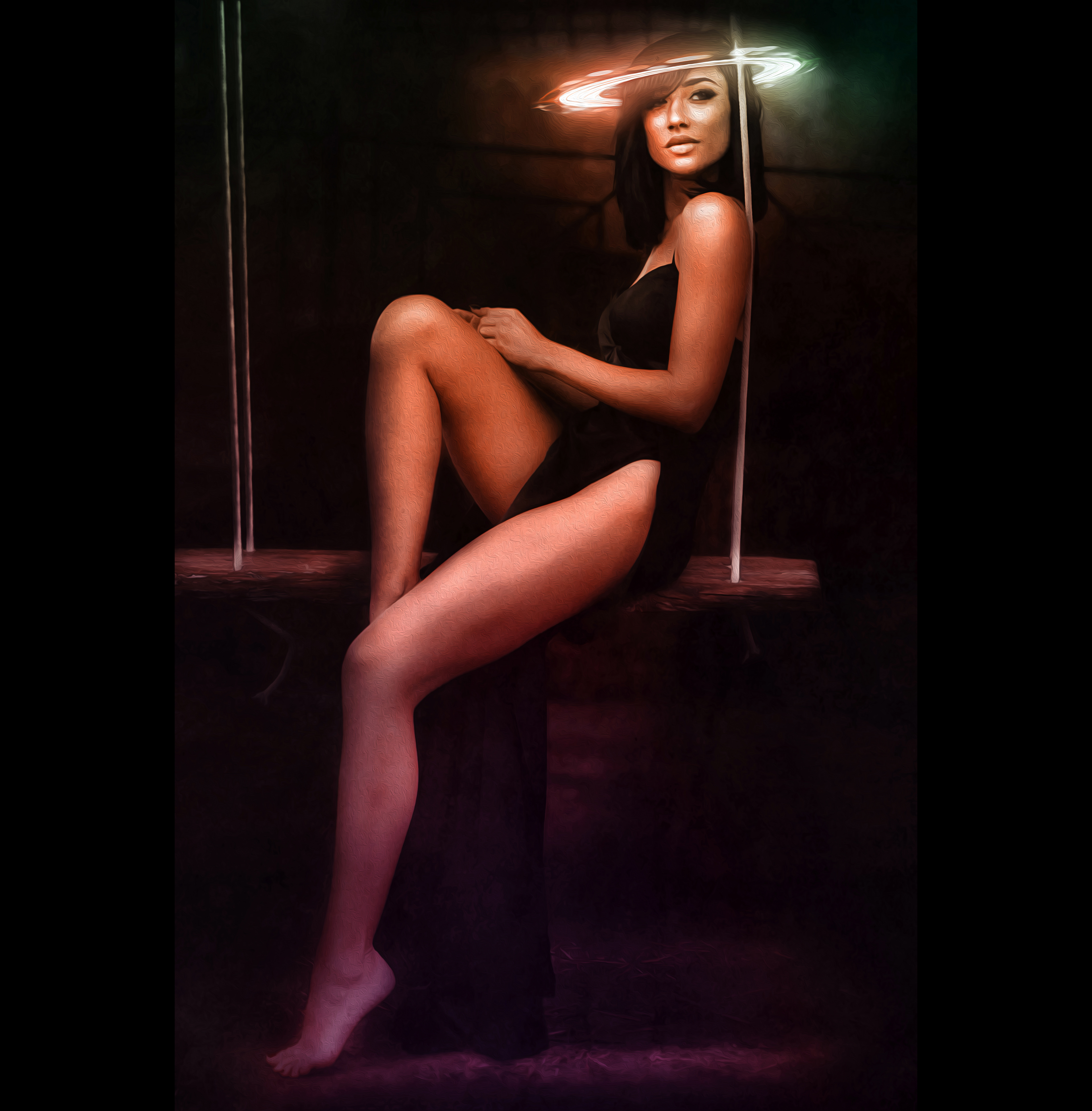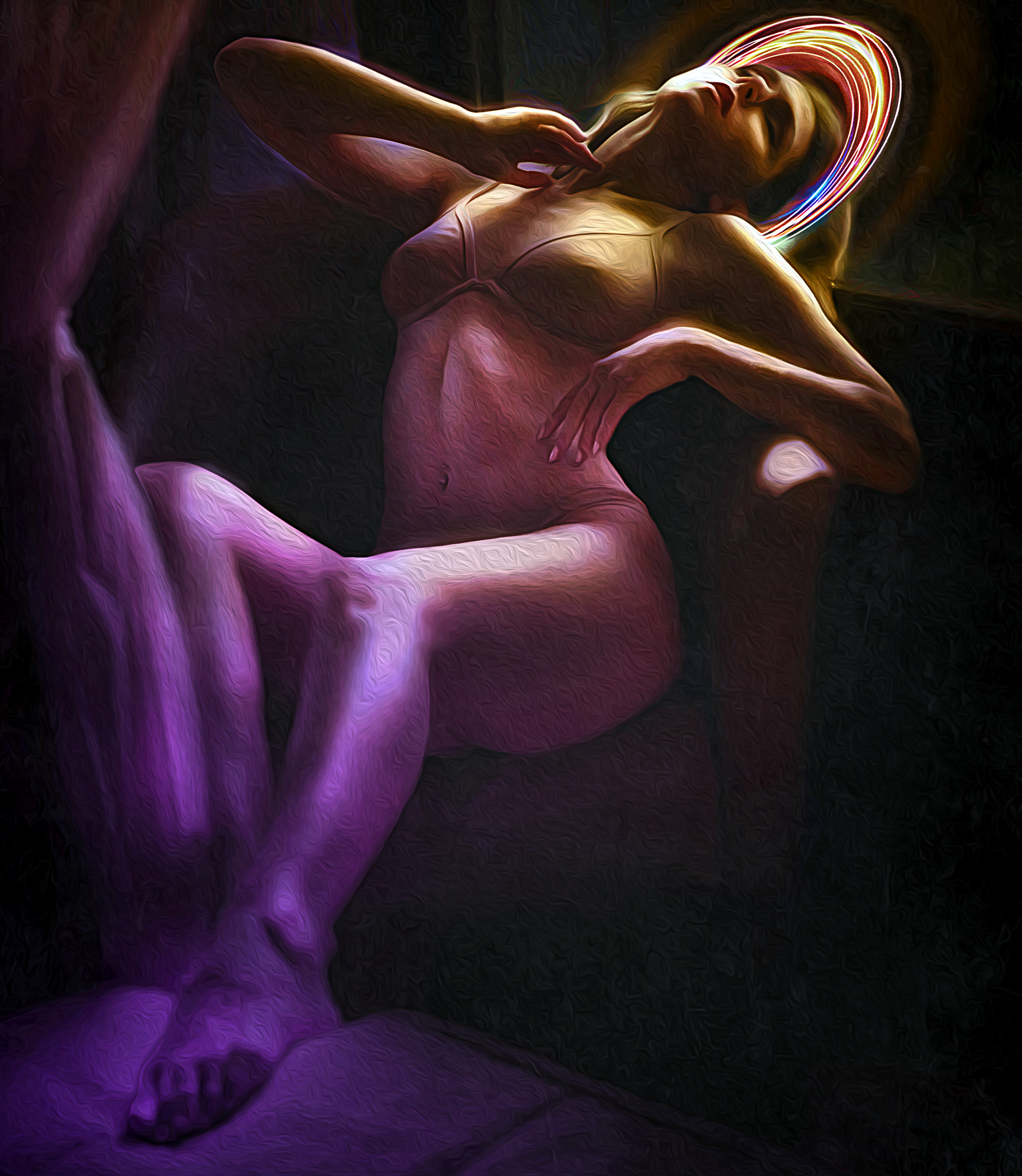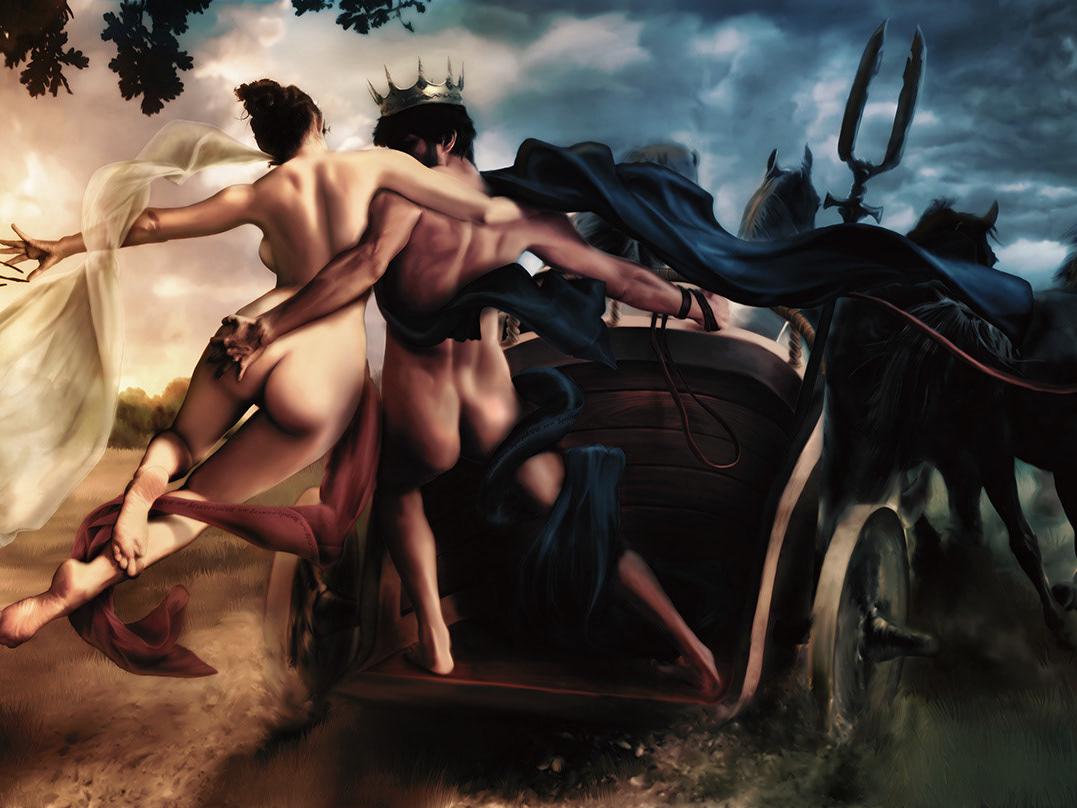The Aureole Project
Glamour and Nude Photography
Digital Photo Edition
Digital Painting
Photo Retouching
Instagram Project account: @aureoleproject
Instagram Personal Portfolio: @davidjr.pro
Instagram Persoal account: @desconfusao


Model: Natália Mesquita

Model: Giulia Biagioli

Model: Martina Lane

Model: Natália Mesquita

Model: Herodiade
THE AUREOLE PROJECT CONCEPT
My intention with the Aureole Project is to express and reinforce the strong relationship between divinity and sensuality. It aims to propose an epiphanic celebration through a visual dialogue, as well as a resignification about the deepest meaning of these subjects. I always was passionate about the ideals of God and female beauty. Spite of my current non-religious-but-still-spiritualist beliefs, I´ve grown in a very religious environment, so wondering about God and his virtues were a constant topic in my daily routine. Through the Christian mindset, I´ve learned to deeply respect and worship the beauty in nature which "reveals the majesty of God´s creation", like the sea, the sky, the animals, and the light itself. But as I grown up, I´ve started to noticed something that bothered me: I found out that my religion seems to have some radical concepts against the beauty of human nature, specially regarding sensuality. Our natural instincts and sexual desires was usually associated to sin, something we should fight against, to overcome our decadent humanity and become a saint, by rejecting our "carnal body" and embracing our spirit. As maturity came, I´ve naturally started to discover my sexual aspirations. By this time I was also developing my drawing skills, learning about lights, shadows, color, proportion, perspective, and human anatomy. And I´ve started to face one of the most disturbing feelings: I found in the human body, and specially women´s body, the most expressive and astonishing icon of beauty, and therefore my favorite subject to draw. But together with the awe, it came guilt feelings as people in my community started to judge me as sinful, pervert, and they told me that my art works was not safe nor healthy for my soul, nor for the ones who eventually could see my drawings, because they shall evoke lascivious sins. I was a very devoted Christian, so when I realized that the feeling of awe which raises from the admiration of a woman´s body was also followed by a growing sensual eagerness, I feared that lusty energy, and let myself get blocked by the guilty imposed by my religious community. So I stopped drawing women, and focused in animals. I loved specially drawing dinosaurs. I felt like drawing could brought a power to bring back to life those ancient creatures. And I focused my anatomy drawings in man´s body, things which I truly could express and appreciate without the "risk" of awakening any sensual urge. But it just didn´t felt fulfilling to me. How could God draw himself the most perfect curves of nature and then prohibit me to reproduce and admire its beauty? And why the sensual urge should be considered a sin by itself if this feeling is a direct consequence of that holy beauty? After years naively struggling with these moral conflicts I discovered many philosophies like the free love, consensual non-monogamy, and finally the Tantra philosophy, and based on these discoveries I decided to embrace my own beliefs, and this is what I want to share in this project. The women´s beauty is one of the most inspirational powers of nature. In fact, like any kind of powerful force of nature, it can be channeled for good or for bad things. When this energy is directed to the wrong path like selfishness, non-consensual domination, and rage, it ends up leading to disrespect, objectification, and depreciation, ending in oppression and the most brutal behaviors. By the other hand, we also know that with the right orientation, like the guidance of love, reason, true admiration, and empathy, the power and energy raised from the admiration of women´s beauty can transform and motivate any man or woman to care, to worship, to give love, to share affection, to make efforts to be a better version of themselves, in order to be worthy of such beauty, or just to be part of it.
In the Project Aureole, I want to reinforce the lenses of natural holiness that resides in sensuality, and show the beauty through eyes of love, reason and empathy, so the observer can admire all the beauty, and why not, let all the sensual energy flow through the soul without any guilt, but with profound awe and respect for the source of this energy, in a ritual of celebration for the intrinsic divinity carved in each curve, each gradient, each texture, without forgetting to admire the spark of holiness in their human souls, and remembering that, more than a static sculpture, there is a complex human being, with an entire universe of thoughts and feelings orbiting their minds, willing to be discovered and valued by what they truly are inside; Sentient, intelligent and highly sensitive beings who with astonishing courage and altruism decided to share their intimacy and vulnerability to anyone capable of receiving what they have to share, without distinction.
To achieve this objective, I took pictures of real women, trying to capture their natural beauty, sensuality, humanity and divinity. In the background I use high contrasts and aged textures, recalling the baroque fine arts classical styles which are well recognized for representing religious and mythological subjects. I combine vivid colors, even in the dark areas, to recall the beauty and variety of feelings that may populate the soul of the represented person. I play with the lights bringing prominence to the face and head, then irradiating for the rest of the body. And finally, I decided to compose all the subjects with one of the most ancient and recognized icon of mythic holiness, the aureole, evoking our references to almighty goddess and heroines, making it almost impossible for the observer to ignore the respect that beauty deserves. The aureole is also the main source of light, remembering that all the beauty of the body is even more illuminated when composed by the beauty of healthy and shiny minds and souls. But differently from the ancient concept, the light rings of Project Aureole are far from the static classic representation, because this concept has a more dynamic aesthetics, meaning the complexity of thoughts and feelings orbiting vivid and active women´s minds. The aureoles I create are each one unique and never have the same pattern, representing the individuality and uniqueness of each beauty. It also have a neon style, evoking a futuristic looking, reinforcing this is definitely a new kind of aureole, the future and revolution over the inadequate, old-fashioned and puritan aureole, and a halo that emphasizes the woman as a thinker, and which expresses her freedom to do whatever she wants with their life and her body, being elevated by their overjoyed will to be whoever she wants to be.
THE AUREOLE ICON IN ART HISTORY
An aureola or aureole (diminutive of Latin aurea, "golden") is the radiance of luminous cloud, usually represented as a crown of light rays, circle or disk of light that surrounds a person in art, in paintings of holy or sacred figures, surrounding the head or the whole figure, and in English is called Halo or Nimbus.
It has been used in the iconography of many religions, and has at various periods also been used in images of rulers or heroes. In the religious art of Ancient Greece, Ancient Rome, Christianity, Hinduism, Buddhism and Islam, among other religions, sacred persons may be depicted with a halo in the form of a circular glow, or flames in Asian art.
The nimbus in Christian art first appeared in the 5th century, but practically the same motif was known from several centuries earlier, in pre-Christian Hellenistic art. It is found in some Persian representations of kings and gods, as well as on most representations of the Buddha in Greco-Buddhist art from the 1st century AD. Its use has also been traced through the Egyptians to the ancient Greeks and Romans.
In the circular form the nimbus constitutes a natural and even primitive use of the idea of a crown, modified by an equally simple idea of the emanation of light from the head of a superior being, or by the meteorological phenomenon of a halo. The probability is that all later associations with the symbol refer back to an early astrological origin, the person so glorified being identified with the sun and represented in the sun's image.
With increasing realism in painting, the halo came to be a problem for artists. So long as they continued to use the old compositional formulae which had been worked out to accommodate haloes, the problems were manageable, but as Western artists sought more flexibility in composition, this ceased to be the case.









